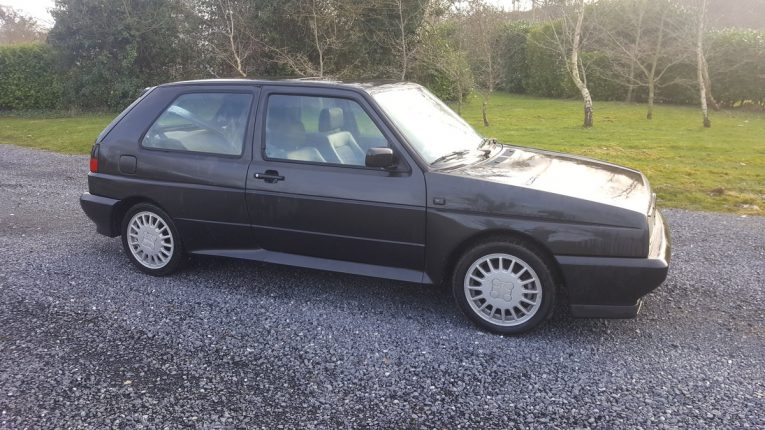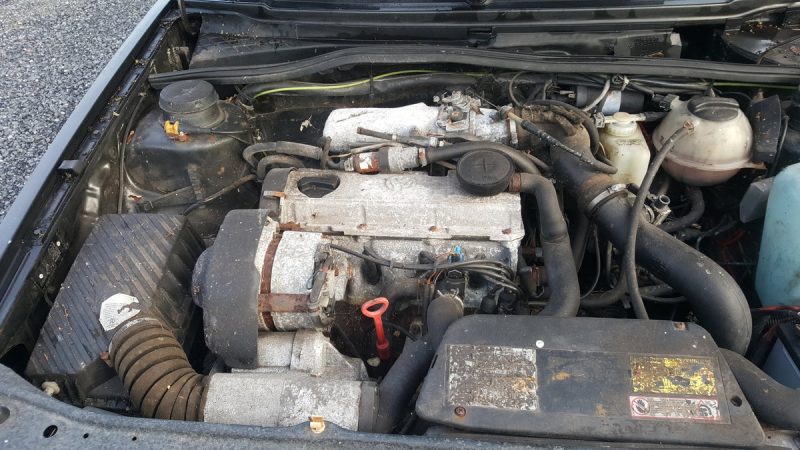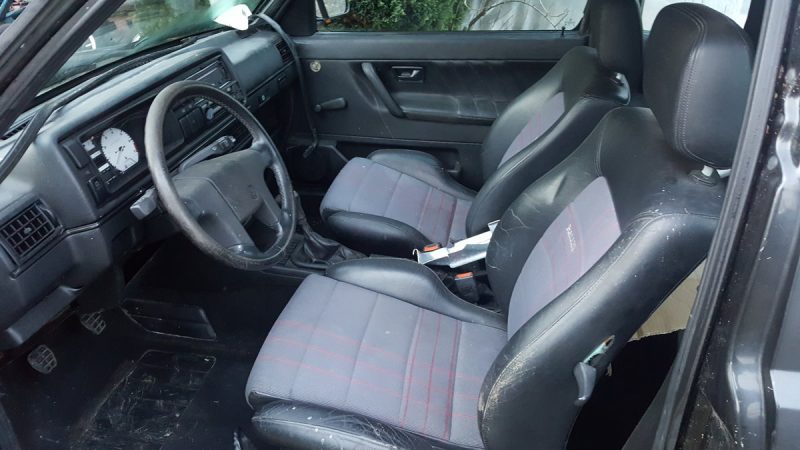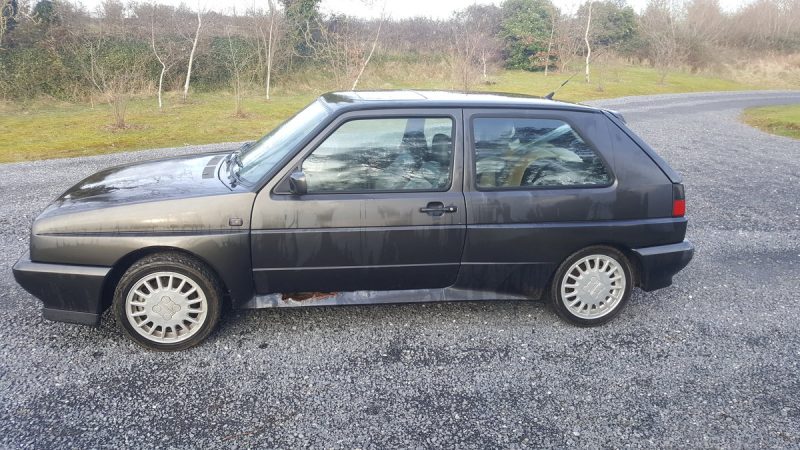1989 Volkswagen Golf Rallye – Project Profile

The Mk2 Volkswagen Golf has cemented itself as a proper classic car. It might not be as pure or as nimble as the first Volkswagen Golf, but there is no denying that it carries with it a charm and appeal that models after the Mk2 failed to capture. In GTi guise, the Mk2 Golf was a serious contender in the hot hatch world, and kept cars like the Astra GTE, the Escort XR3i and others at bay. However, as with all hot hatches of the 1980s, the story didn’t end with the showroom ‘hot’ model. There was also something a bit more special, created in the name of homologation.
In the case of the Golf, that car would be the mighty Rallye from 1989. At first glance, it was business as usual, but that soon changed. Gaze upon it a bit longer, and you were treated to wide box arches, the round headlights were gone in favour of rectangular ‘projector’ items, the front bumper boasted a deep chin, while the side-skirts offered equally deep angles. It was a Golf, but one that had spent considerable time in the gym.
What is it?
The Golf Rallye was more than just a beefy body kit. It had the minerals to make it a proper performer. First of all, Volkswagen did away with the Golf’s traditional front-wheel drive and instead, went for its trusty all-wheel drive Syncro system, giving the Rallye exceptional grip. And grip was important, because the 1,763cc four-cylinder engine had a supercharger strapped to it, resulting in 161bhp. That might not seem like an outrageous power figure by today’s standards, but do remember, this was a car that tipped the scales at around 1,196kg. For comparison, a new Golf is some 200kg heavier.
The car is an original 1989 model, but as you can see, it’s fallen on hard times. Though we’ll go into more detail about that below. Fundamentally though, while this particular Rallye is in need of a great deal of love, the fact remains that it is an unmodified example, and that’s the best one to have. A number of years ago, the left-hand drive only Rallye was a cheap proposition, and as such, many were modified. R32 engines, for example, were a common swap. And while that engine is good, it’s not original. And given rough cars, like this one, are up for fifteen grand, you get the suspicion that original may be best. A Rallye in decent condition, like this 1989 version, is £31,500.
Why is it a project?
Sadly, this old Volkswagen Golf Rallye has been left to deteriorate over the years. The current owner states he bought the car back on ‘05 when it was in presentable, usable condition. However, since then the car has seen minimal use. It’s also been stored outside, which is never a good thing for ‘80s metal. As such, the dreaded rust has taken hold in some areas and as such, the old Rallye is in desperate need of surgery. However, on the positive side, the car does run and drive (though there is a brake fluid leak), and a new clutch slave cylinder was fitted last year to keep the car functional. The car is also largely standard, with the exception of some drilled and grooved discs, a 69mm alloy supercharger pulley and a re-map.
The Rallye, which currently resides in Southern Ireland, comes with stacks of history. It was imported to the UK from Germany in 1998, and then to Ireland in 2005. Enthusiast owned since, the Rallye was to be one of the cars the current owner would restore. However, as the years rolled on, the likelihood of this happening dwindled, hence the sale.
The key issue with the car is the rust, especially on the left-hand side, where the sill has completely rusted through. However, for an additional £1,250, the vendor does have a complete NOS side panel that can go with the car. Make no mistake, this old Golf is going to need an awful lot of work. The rust you can see is probably only the tip of the iceberg. This is, in all honesty, going to need to be a full nut-and-bolt restoration from the ground up. A car so rare is deserving of nothing less. A lot of work, yes, but it’ll be worth it.
Five things to look for:
1) Rust
The vendor has already stated (and you can see it on the pictures) that rust has set in. However, it won’t hurt to look deeper and see just how much it’s taken hold. Boot floors, A-pillars, firewall, inner wings, foot-wells, all common places for Golf-based rot.
2) Driveline
The Syncro system is pretty hardy, consisting of a viscous coupling with open front and rear differentials. It’s going to be difficult to test it fully, but you can still visually inspect the system for leaks or damage. Remember though, it’s front-wheel drive most of the time, so don’t panic if only the front wheels spin.
3) Electrics
Old electrics can be a nightmare, especially on a car that’s been sat outside for who knows how long? You need to make sure everything works, make sure no damp or corrosion has set in, and make sure no critters have been at it.
4) Trim
Finding trim for a Rallye is going to be near impossible, so you need to make sure everything is present and correct, and at the very least, restorable. If anything – door cards, etc – are destroyed, finding them is going to be tough.
5) Supercharger
The vendor states the car had a reconditioned supercharger fitted in ‘04, but that was a long time ago. And the car has been sitting idle. The G-Lader is a scroll-type supercharger, and because of its design, corrosion can build up within the complex inner structure.
What should you do with it?
With a car like this Golf Rallye, of which only 5,000 were built, the best course of action would be to restore it back to standard condition. As we mentioned earlier, given the car has lived outside for a long time, it would be best to go down the route of complete strip down and rebuild from the ground up. Leave no nut unturned, build it back up to be the best version of itself. This is a car with a passionate following, so if you restore it properly you shouldn’t lose any money on it. Though that’s not the point, as you’ll discover when you take it for a drive after all the work is done.





